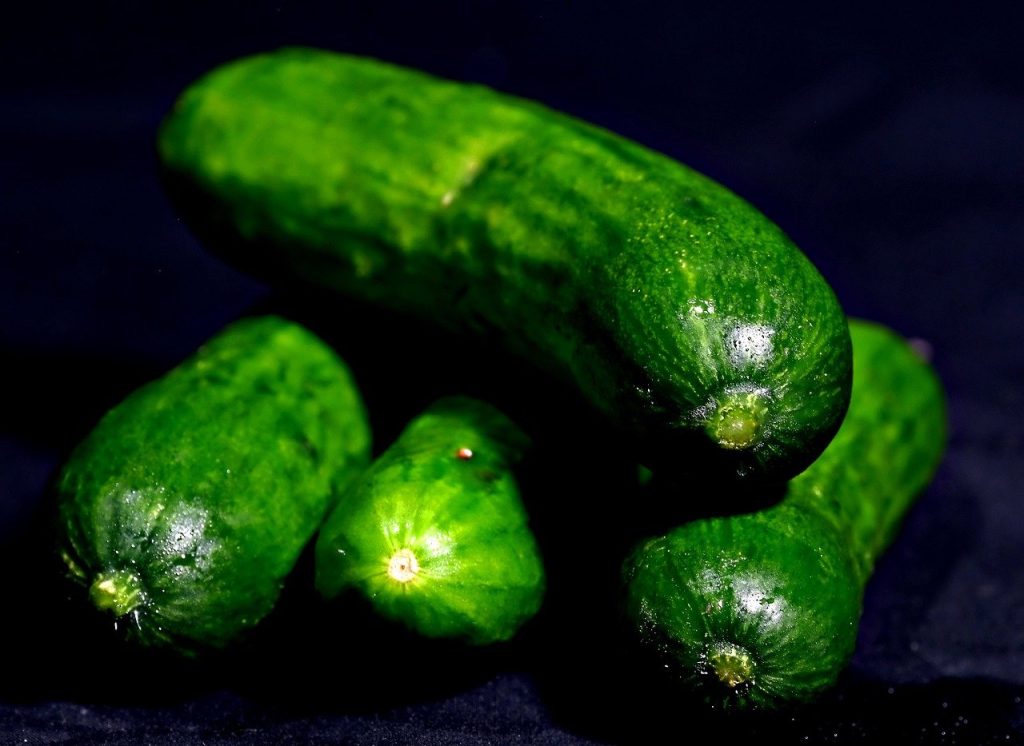All fields are required
Posted in Outbreaks & Recalls,Salmonella on June 6, 2024

Could we have two cucumber Salmonella outbreaks right now? Or just one very complicated one?
Only time. And more data. Can solve that riddle.
What started out as one outbreak led to the discovery of a second outbreak of a different strain of Salmonella bacteria. Both appear to be centered around cucumbers.
Initially, the U.S. Food and Drug Administration (FDA) announced a huge 100 case Salmonella outbreak. But the details were held close to the vest. Not much was initially known, other than 100 people became sick. Presumably with genetically similar strains of the same Salmonella bacteria.
An outbreak can be defined as two or more people becoming sick with the same illness after consuming the same food. But in this case, the food connection was still elusive.
Shortly after, an update increased the case count to 141.
Then there was a breakthrough.
The Pennsylvania Department of Agriculture notified a cucumber supplier, Fresh Start Produce Sales, Inc., that samples taken from retail stores in the state tested positive for Salmonella. The FDA announcement from May 31, 2024, indicated that their agency and the Centers For Disease Control and Prevention (CDC) were investigating this recall, as it may be related to an existing outbreak investigation.
“The FDA is conducting whole genome sequencing to determine if this sample is related to an ongoing Salmonella outbreak investigation.”
On June 5, 2024, another update was published. At the same time the FDA increased the Salmonella Africana case count from 141 to 162, they confirmed the suspected food linked to the outbreak was, in fact, cucumbers. The number of hospitalizations were also updated to indicate 54 cases required serious medical treatment.
Enough epidemiological data from traceback information has given probable cause for the FDA to move to the next step. Facility inspection and additional sampling activities. Presumably at Fresh Start Produce Sales, Inc. facilities and/or contributing farms.
What wasn’t expected, however, was the additional Salmonella outbreak announcement. This one for another strain of Salmonella bacteria. Salmonella Braenderup.
The Salmonella Braenderup outbreak announcement so far has not officially linked a suspected food to the new outbreak that includes a whopping 158 initial cases. It has, however, indicated that a traceback investigation has been initiated and that the investigation is ongoing.
According to the FDA, the joint FDA and CDC investigation of Salmonella Braenderup infections “shares several similarities with the Salmonella Africana outbreak.” These similarities include both where and when illnesses occurred as well as the demographics of people who have fallen sick with salmonellosis (the illness associated with Salmonella bacterial infections).
The agencies are working hard to determine whether the two outbreaks could be linked to the same food – cucumbers. Or if this is a huge coincidence.
But if it looks like a pickle. And smells like a pickle. It is probably a cucumber!
The FDA says that the investigation is ongoing and “the outbreak advisory and the CORE Investigation Table will be updated once additional information becomes available.”
It may seem strange to think that two different bacterial strains could be part of just one outbreak event. But it wouldn’t be the first time. In some cases, multiple strains could be involved in the contaminated food source.
This was the case in a ground beef associated outbreak that took place in 2000, and the more recent raw milk associated outbreak that took place at the beginning of 2024.
The November and December 2000 E. coli O157:H7 outbreak that resulted in a 1.1 million pound ground beef recall is a great example of multiple strains in a single outbreak. It was such a good example, a journal article was written about it in the Journal of Clinical Microbiology as a case study on why investigators shouldn’t stop looking after they find one bacterial strain.
In this case, there were five “genetically distinct patient strains” of the dangerous Escherichia coli O157:H7 bacteria among the 74 laboratory confirmed Wisconsin cases. All cases had strong traceback data indicating consumption of a particular brand of ground beef obtained from particular grocery stores. Two different E. coli O157:H7 strains were isolated from ground beef samples. One that matched an outbreak patient strain. And one that didn’t.
It happens.
In the beginning of 2024, two Washington state residents from two different counties were infected with the same strain of E. coli. Both drank raw milk from Cozy Vale Creamer in Tenino, Washington in the period before becoming sick.
Samples from Cozy Vale Creamery obtained during the investigation revealed a positive E. coli result. However, it was different from the strain the two outbreak patients shared.
A recall was initiated for the product.
Not long after, a second recall was announced due to another milk sample testing positive for E. coli. Again, not matching the original outbreak strain.
In March, another Washington resident was diagnosed with an E. coli infection. However, their sample was closely related to the second recall strain.
Complicated indeed.
Could we have two cucumber Salmonella Outbreaks or just one complicated one? Only time and more data can determine the answer to that.
In the meantime, we will keep a close eye on the investigation as it unfolds.
Have you been impacted by one of these two cucumber outbreaks or have become sick from consuming cucumbers, The Lange Law Firm, PLLC can help.
Navigating the legal process can be complicated. The Lange Law Firm’s Salmonella lawyers have successfully represented cases just like yours.
Call (833) 330-3663 or fill out our online submission form for a free consultation and a compassionate member of the team will go over the details of your situation to determine if you have a legal case.
By: Heather Van Tassell (contributing writer, non-lawyer)
Notifications